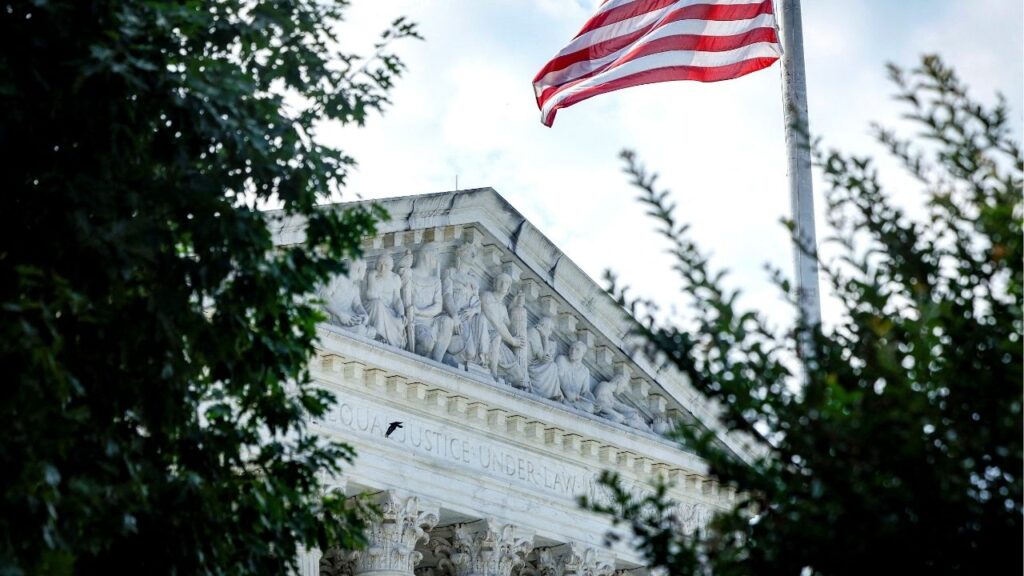Prop. 2's funding model favors wealthy districts, exacerbating inequities in California's school facilities. (CalMatters/Alisha Jucevic)

- Lynwood Unified School District faces severe facility challenges, including a condemned theater and lack of kitchens in some schools.
- Prop. 2 would authorize $10 billion for school renovations, but its funding model disadvantages lower-income communities.
- Critics argue Prop. 2's approach may violate California's constitutional civil rights laws and perpetuate educational inequities.
Share
|
Getting your Trinity Audio player ready...
|
In Culver City last year, the high school put on a performance of the hit musical “Mamma Mia.” The student actors had full costumes, makeup and microphones. The hand-painted set was lit beautifully, and audiences cozied into the state-of-the-art Robert Frost auditorium, a complex that can fit 1,100 people.

Jen Byers
Special to CalMatters
Opinion
Every child deserves this kind of access to the arts, creativity and a quality education.
But, 15 miles away, Lynwood Unified School District no longer has a theater. Too many of the building’s trusses were in disrepair, and the building had to be condemned. Some of the Lynwood schools don’t even have a kitchen. Lunch is prepared offsite and brought into the schools, to be warmed and served to kids, 97% of whom qualified for free or reduced-price meals last year.
In 2020, Lynwood High’s roof collapsed when the school was closed during the pandemic. The damage was so extensive it ultimately required a full demolition. When in-person classes resumed, the students were sent to other schools and sites within the district. The school won’t be fully rebuilt until 2027.
This is just one district. Across California, almost 40% of public school students attend class in sub-standard facilities, according to the Public Policy Institute of California. Nearly 2 out of 10 students attend a school with at least one major deficiency such as a gas leak, structural damage or electrical problems.
To make matters worse, the state funds to improve California’s school buildings are running thin, and a November ballot measure seeking to help replenish the pot risks making school inequities even worse.
Proposition 2 would authorize the state to borrow $10 billion to fund renovations, fixes and new facilities for K-12 schools and community colleges. However, the funding model favors districts in wealthier areas, forcing districts with fewer resources and greater needs to reluctantly back a ballot measure that would give larger sums to schools in better shape.
If passed, school districts would individually have to raise money for Prop. 2 funding, and the maximum amount they could raise would be based on local property tax value. The districts would then apply for aid from the state, which would chip in to match 60-65% of the cost.
Since Prop. 2 bases the “bond capacity” — or the amount of money a school district can raise for a state match — on property taxes, lower-income communities will face a steep disadvantage. This means districts like Lynwood won’t be able to meet all of their pressing needs, let alone catch up to their neighbors’ world-class standards.
Too many schools in low-income areas are just struggling to survive, while schools in wealthier districts enjoy better facilities and learning outcomes.

“We recognize there’s a great need, and that’s what the status-quo supporters are betting on,” said John Affeldt, the managing attorney and education program director for Public Advocates. His nonprofit law firm believes the Prop. 2 funding model may violate California’s constitutional civil rights laws. They’re concerned districts are being backed into a corner.
“These starved districts, who are being disproportionately provided lesser funds for their needs, are so starved that they’ll support anything they can get from the state,” Affeldt told me.
Since the funding pot has essentially run dry, and since so many school buildings are in disrepair, educators feel stuck between a rock and a hard place: Either they back Prop. 2 and receive whatever funding they can get, or they don’t pass the bond and the schools have no added money to help repair facilities.
Related Story: California Pledged $500 Million to Help Tenants Preserve Affordable Housing. ...
The Only Option
Gary Hardie Jr., a Lynwood Unified School Board member, told me that the legacy of redlining has long affected the area’s property values and thus limits what the Los Angeles County district can borrow. Districts on public or tribal lands, for example, would be eligible for far less.
GV Wire encourages vigorous debate from people and organizations on local, state, and national issues. Submit your op-ed to bmcewen@gvwire.com for consideration.
“Our maximum (bond capacity) is $200 million, which is at least a quarter billion lower than our (Los Angeles) counterpart in the neighborhood next door,” he said. “So, even if our (local bond measure) passes, and we’re fully funded at the maximum level of state matching funds, we’re still not even close to what other communities could bring in.”
Practically, that means Culver City can raise $52,000 per student, while Lynwood can only raise $6,000.
Disadvantaged school districts are already more prone to pollution, vulnerable to the effects of climate change or facing the myriad consequences of historic poverty. All of these factors can affect the building quality, conditions and campus needs in lower-wealth public schools.
“I sort of feel like people living in redlined, under-invested communities should not have to have increased taxation in order to fix this system in the first place,” Hardie said. “You’re making the people who are the victims of the problem to have to be the solution.”

Lynwood School Board member Dr. Gary Hardie Jr. at the Lynwood Unified School District offices in Lynwood on Oct. 4, 2024. Photo by Alisha Jucevic for CalMatters
Reluctantly, Hardie has begun to voice support for the district’s $80 million bond measure, Measure U, and a commissioned poll found that more than two-thirds of voters would approve it. For years, Hardie opposed the state legislation that eventually became Prop. 2, but now he feels this is the only option.
The need is just too real.
While Prop. 2 includes a “hardship fund” for schools to apply for added funding, this piecemeal solution doesn’t even come close to fixing the equity gap. The hardship funding can only help tiny districts, so it isn’t available for larger districts that need extra support.
Sara Hinkley, the California program manager at the UC Berkeley Center for Cities and Schools, believes a more effective hardship fund would calculate eligibility based on funds that can be raised per student — helping close the $46,000 gap between Lynwood and Culver City, for example.
Related Story: What You Need to Know About California’s Ballot Propositions
It would also be more effective to distribute the state funding with a progressive sliding scale, rather than a universal 60-65% match. In practice, that would mean schools that already have sufficient cash might receive a smaller state match, if they receive any assistance at all. Schools with less wealth could get a majority, if not all, of their projects funded by the state.
Her proposal and others like it attempt to address a basic reality: It’s unequitable for wealthier communities that can raise more money to receive higher payouts from the state.
Ultimately, Prop. 2 offers California not a solution, but a Band-Aid over the gaping wound that is the public school facilities funding system.
Couple that with the fact that the entire bond system relies on loans from Wall Street banks, whose priorities are cash — not equity in public education — and cracks much larger and structural than Lynwood’s auditorium trusses or high school ceiling begin to emerge.
But for districts like it across California, I guess a Band-Aid is preferable to nothing.
About the Author
Jen Byers is an investigative journalist and documentary producer who covers social justice stories, LGBQT+ communities and solutions to the climate crisis. Their work has appeared in Al Jazeera, Showtime, The Guardian and NowThis Earth.
Make Your Voice Heard
RELATED TOPICS:
Categories

Stranger Things Left a Strange Taste


















